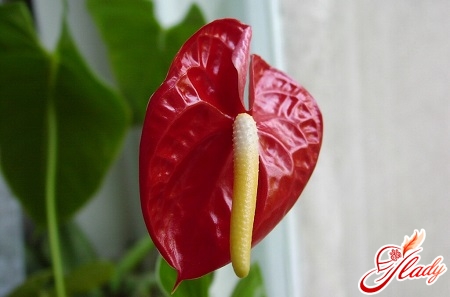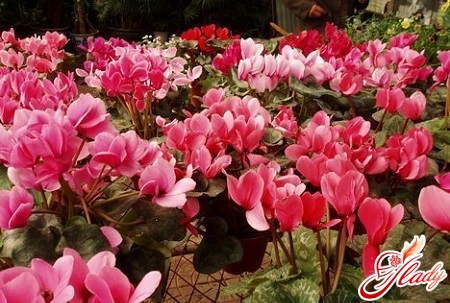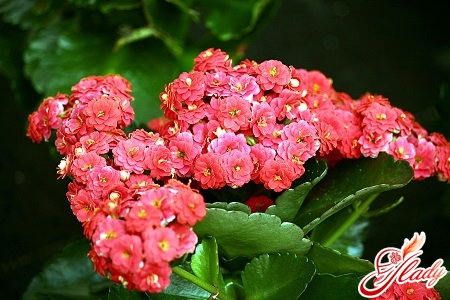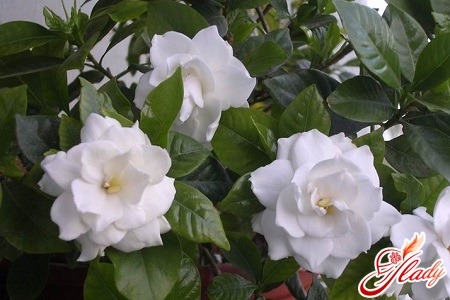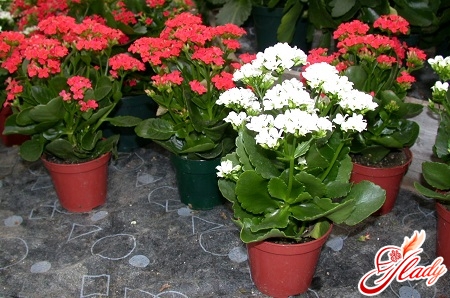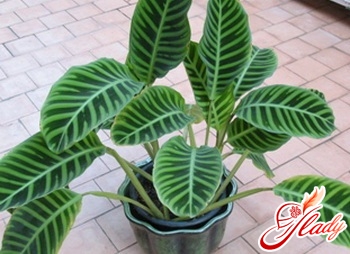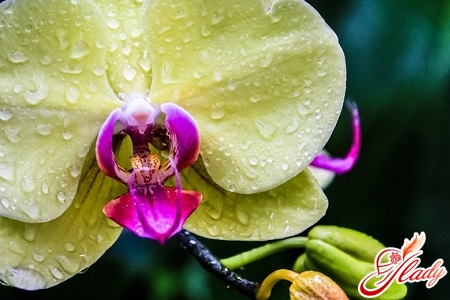 The family of Orchids is considered one of the mostnumerous on the planet. Plants of this species can be found almost in every corner of the Earth, except in addition to Antarctica. The most favorite habitat for orchids are tropical forests. There are thousands of varieties of this plant and more than hundreds of thousands of artificial and natural hybrids. All orchid plants are divided into three groups: epiphytic, terrestrial and saprophytic. Air orchids (epiphytes) are the most numerous group. They grow on trees, getting from them the substances necessary for the development. Moist epiphytes are consumed from the air using air roots. Saprophytes are the smallest species. They do not have leaves, they feed on the decomposing organics of other plants. Dilution of this species is not of interest to ordinary florists. They are fond of only real collectors and connoisseurs of orchids. For home-growing, many kinds of epiphytes are suitable, but it is better for novice growers to choose hybrids designed specifically for room conditions. It is easier to take care of such plants, they adapt more quickly, more abundantly and last longer. In this article we will talk about the indoor species of this plant, and also pay special attention to care for the orchid. But first, let's figure out how to choose the right orchid for your home.
The family of Orchids is considered one of the mostnumerous on the planet. Plants of this species can be found almost in every corner of the Earth, except in addition to Antarctica. The most favorite habitat for orchids are tropical forests. There are thousands of varieties of this plant and more than hundreds of thousands of artificial and natural hybrids. All orchid plants are divided into three groups: epiphytic, terrestrial and saprophytic. Air orchids (epiphytes) are the most numerous group. They grow on trees, getting from them the substances necessary for the development. Moist epiphytes are consumed from the air using air roots. Saprophytes are the smallest species. They do not have leaves, they feed on the decomposing organics of other plants. Dilution of this species is not of interest to ordinary florists. They are fond of only real collectors and connoisseurs of orchids. For home-growing, many kinds of epiphytes are suitable, but it is better for novice growers to choose hybrids designed specifically for room conditions. It is easier to take care of such plants, they adapt more quickly, more abundantly and last longer. In this article we will talk about the indoor species of this plant, and also pay special attention to care for the orchid. But first, let's figure out how to choose the right orchid for your home.
Choose your orchid
So, where to start? No, not with a trip to the store, as many of you thought. You need to start by studying the conditions that you can provide to this tropical beauty: the availability of both sunny and shaded rooms, an open balcony or veranda where plants can be in the warm season, as well as the humidity and air temperature in your apartment in winter. Based on these conditions, you can pick your flower from a variety of popular varieties. Dendrobium, Cattleya, Wanda, Oncidium - these species prefer bright and diffuse lighting, but do not tolerate direct sunlight. The eastern and western windows will suit them best. The southern window sill is also suitable, if in the midday hours to cover the flower from the ultraviolet. Cymbidium, Miltonia - these species like less bright lighting, direct rays of the sun are completely contraindicated. It will be good to grow in places where it is light only in the morning. Phalaenopsis (butterfly) and Paphiodipylum (Venin shoe) - too bright lighting can not stand. For them, slightly shaded places with scattered light are suitable. It is better to grow them not on the windowsills, but in the depths of the room, as far as possible from direct sunlight. It should be noted that the most suitable orchids for home conditions are Phalaenopsis and Dendobium. They blossom abundantly and continuously, sometimes (with proper care) twice a year. These groups include many varieties, so the final choice should be made based on the advice of the store's consultants or by studying the annotation on the package. Hybrids usually cost a little more than species of orchids, but they are easier to care for, because they are more adapted for living at home. 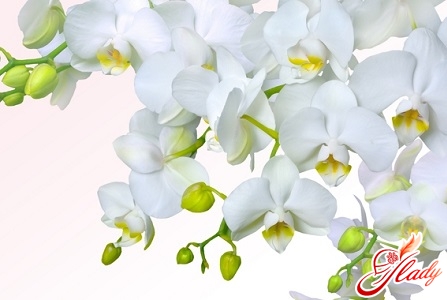
Terms of purchase
Conditions are defined - you can buy a plant. It is best to do this in special nurseries. This is where the breeding of orchids occurs by all rules, and employees can give you full information about their content. If there is no such greenhouse in your city, a simple flower shop will do. But here there are some nuances: the buying process will require more attention from you. So, how to choose the right home orchid? First, pay attention to the inflorescence. They must be fresh, just blossoming. A fading orchid is not recommended (especially for beginners), since it will be more difficult to care for. A healthy plant has a bright color of buds, elastic green or reddish-green leaves (without spots and yellowness), a fleshy root system of a whitish-green color. Checking the roots is easy, because orchids are sold in clear pots. Ask the seller to pack the selected flower well to protect it from sudden temperature changes and other weather conditions. When you come home, check the condition of the soil - if it's dry, pour the plant well with clean water at room temperature. In order for the orchid to successfully acclimatize and grow it did not cause you any special problems, place the flower for 2-3 days in a shady and well ventilated room. Then you can "populate" the plant for permanent residence.
Care of orchids. What difficulties await the florist?
In order to achieve the growth and flowering of orchidshome, it is necessary to look after it properly. It should be noted that the cultivation of this plant before flowering and after it is slightly different. Let's look at all the principles of caring for him. We hope that our advice will help you grow a beautiful and healthy flower. Lighting This factor is the main one in growing orchids. It is he who determines the time and abundance of its flowering. If light is not enough, the plant will not get the proper nutrition and can never throw out buds. But with too intense light, the flowers of the home orchid will get burned, so that it will die. Above we have already talked about the principles of lighting for the most popular indoor orchids. But to care for orchids did not cause any problems, it would not be superfluous to consult a seller or follow the annotation that is attached to the plant when buying. Remember, if the orchid does not have enough light - its leaves darken. If the lighting is excessive - the leaves turn yellow and dry. Irrigation rules The second most important is the correct watering. For growth and abundant flowering of orchids in the home, you need to accurately determine the ratio of moisture and light. It is worth noting that in nature, orchids are not in the water for a long time, because their root system does not tolerate stagnation of moisture, as well as salts that are abundant in it. Each of the orchids needs their watering. For example, phalaenopsis and cymbidium feel well in moist soil. And this moisture must be constant. But dendrobiums and Cattleya do not like excessive watering, so water procedures for them must be carried out after the soil has completely dried. On watering (mainly on its frequency) many factors influence. This is lighting, and air dryness, and the temperature in the room, and the size of the pot. In general, orchids are more lenient to drying out, and not to overflow. On a lack of moisture, the plant reacts with slightly wilted leaves and wrinkled pseudobulbs, which come back to normal as soon as the flower is saturated with water. But waterlogging is fraught with drying of leaves and decay of roots - it will be quite difficult to get rid of such misfortune. Abundant watering is needed for orchids only in the phase of active growth and during flowering. After this, there is a period of rest and watering is reduced. In winter, water procedures are also moderate. Here you need to build on the intensity of light and temperature: the darker and cooler in the room, the less often the plant requires moisture. The correct watering of the orchid occurs by the way of immersion: it is necessary to leave it in a container with warm water for 15-20 minutes. After that, excess water must be drained, the flower should be allowed to spend the night in a shady room (without drafts) and return to a permanent place of residence. In addition to diving, you can use a warm shower. The water pressure should not be strong, otherwise you will damage the plant. Watering is carried out until the soil is completely wet. At the same time, excess water should come out of the drainage holes in the pot. Picking pot and substrate Ideal for epiphytic orchids (for example, phalaenopsis) is the one that is capable of retaining moisture around the root system at a minimum, not allowing rotting, and letting in the right amount of air. Such a soil will greatly facilitate the cultivation. It can be purchased at specialized stores. The soil consists of bark, moss, charcoal, granulated clay and sand with particles of vermiculite or perlite. There is no garden land in the substrate for the epiphytes at all. As a container for transplantation, it is best to use wire pots, baskets or nets that can hold the ground inside. For terrestrial orchids (which include cymbidiums), the substrate is prepared from the same elements with the addition of a small amount of sod land and dry leaves. The pot is best used transparent, made of plastic and having holes for draining the water. So you can constantly monitor the condition of the roots, you will be sure that the excess moisture does not stay in the substrate. So - watering will be done by all rules. Air temperature The home-grown orchids described above, feel fine at a moderate temperature: in the daytime - 18-25 degrees, at night - 13-22 degrees. By the way, it is the difference between night and daytime content that is necessary for flowering. Therefore, if your apartment is connected to central heating, try to provide the flower with cooler content at night. It also happens that the transfer of orchids from heat to coolness serves as a kind of stimulant for the release of peduncles and prolonged flowering. It should be noted that many species of orchids normally experience insignificant deviations from the desired temperature. Just do not forget to adjust and watering: when lowering the degree - cut it, and when increasing - increase. Circulation and humidity of air Orchids like rooms with high humidity of air - 60-80 percent. If your apartment does not fit these figures, create the desired humidity artificially. To do this, take a special pallet with a grate (you can buy it in a flower shop), pour water in there, then lay a layer of expanded clay on the grate. This design should be installed directly under the pot with an orchid. The main thing is that the roots of the plant do not touch the water. In hot weather, you need to spray the leaves from the spray gun. During flowering spraying is best to stop or moisturize only the air around the flower. The procedure should be carried out in the morning and in the afternoon, so that the leaves and the stem have completely dried out before nightfall. Remember, orchids can not stand drafts! However, light air circulation does not damage them. If the room where the flower lives is not ventilated at all, you can periodically turn on the fan with a weak motor. Especially important is airing for cymbidiums, since they are considered to be the most cold-loving orchids. And remember, the fan was turned on - increase the watering. How to feed orchids? For frequent and abundant flowering, the orchid should be fertilized. Do this regularly - about once every two weeks. It is best to buy special fertilizers that are specifically for these plants, and use them strictly adhering to the instructions. Do not use any fertilizing that is not for orchids! It can lead to illnesses and even to the death of a plant. With the onset of a period of rest (after flowering) and cold weather, the amount of fertilizer must be reduced - once a month will be quite enough. Transplant rules Contrary to popular belief, transplantation of an orchid is not at all due to an overgrown root system. The signal for migration is the green mass, which protrudes far beyond the pot. Transplantation is contraindicated during flowering. It is best to do it right after a period of rest - at the very beginning of a new growth. So, the transplant rules:
- To begin with, very carefully, trying not to damage the roots, we pull the flower out of the ground;
- If necessary, cut the pot;
- After you shake off the roots of the old earth and bark and clean (better sterilized) scissors, remove all damaged and decayed areas;
- Prepare a container for transplantation, it should be two sizes larger than the previous one;
- At the bottom place a small layer of fresh soil, exactly in the middle put a flower and fill the pot with the remaining substrate;
- It must evenly fill the space between the roots;
- Too ramming the mixture is not necessary - just press it gently;
- After that, water and put the plant in a shaded place for 2-3 days. This is necessary for rapid and successful rooting.
That's all - the transplant is complete. 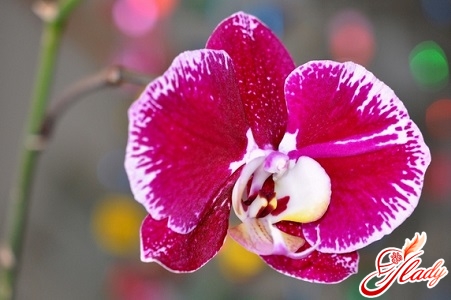
Reproduction at home
It is considered that the reproduction of this plant- an occupation that yields only to experienced flower growers. In fact, there is nothing complicated in this process. So that you can be convinced of the veracity of these words, let's take a closer look at what constitutes the reproduction of orchid flowers, and also pay attention to the rules of caring for children. Reproduction by bulbs Most often, a domestic orchid reproduces by dividing the rhizome. It is important that at this time your flower has already grown sufficiently and was completely healthy. The best time for this process is the beginning of spring. So, where to start breeding? First of all, you need to pull the flower from the pot and clean the roots from the ground. Then take a sharp and disinfected knife and cut the rhizome strictly between the false bulbs. To the young plant does not catch the infection, the sections must be treated with crushed charcoal. Further, the children are transferred to new pots. Young animals require abundant watering and time for acclimatization. The apical propagation of some varieties of orchids, for example, the Wanda species, occurs by cuttings. The growth of this plant comes from the apical point, without the formation of pseudobulbs. The multiplication begins with the cutoff of the upper shoot (the damaged spots are also poured with coal). After this, the finished stem is placed in the pot with the substrate, the cut part must be in the ground. Now the plant needs watering and a couple of days stay in a shaded place. To care for a young orchid is necessary as well as for an adult. Reproduction by lateral shoots Orchids belonging to Phalaenopsis and Dendrobium species form lateral shoots, with the help of which reproduction occurs. Once you notice that the plant has released the baby, increase watering and spray it more often. This is necessary in order for the escape to grow stronger, grow up and form its own roots. As soon as this happens, the baby is separated from the mother plant. The transplant into a separate pot is carried out only after the processing of sections with charcoal. Wait for the flower to release new leaves, and we can assume that the reproduction was successful. As you can see, there are no special secrets about growing orchids in the home. The main thing is to choose the optimal care for the plant and, of course, pay enough attention to it. After all, flowers are also living beings who need your love and care. Believe me, they will certainly thank you for the abundant and long flowering!




